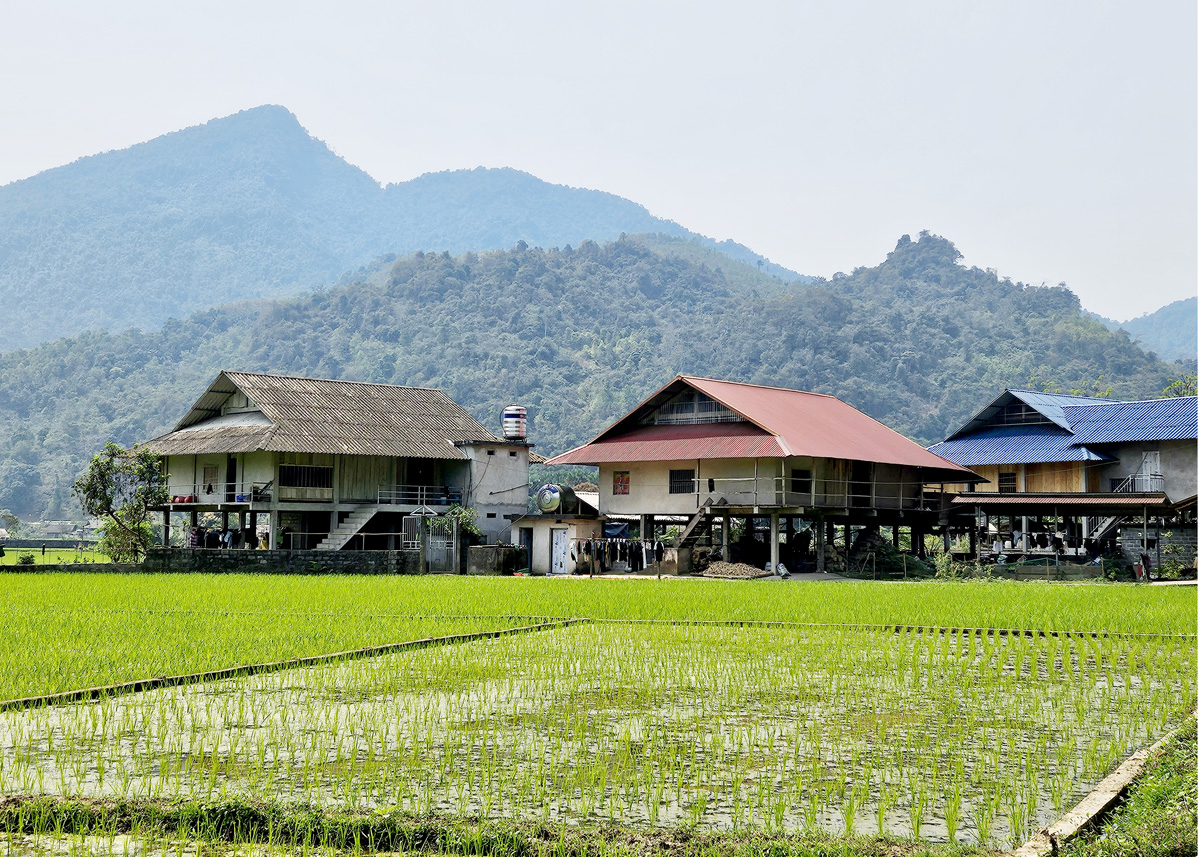Tay people's stilt houses culture preserved
BHG - Located among the mountains, forests and vast rice fields, the Tay people's stilt houses in Ha Giang are not only a place to live but also a unique cultural symbol, closely associated with the spiritual life of many generations.
These houses are built in favourable locations, choosing directions suitable to the terrain and feng shui to ensure peace and development for the family. The stilt houses represent the harmony between people and nature, connecting generations.
 |
| Stilt house in the middle of a field in Tung Ba Commune (Vi Xuyen). |
A traditional stilt house usually has four to seven rooms, roofed with palm leaves, tiles or corrugated iron and a system of sturdy wooden columns with an even number.
The two main roofs have a moderate slope, helping to drain rainwater quickly. The interior space is flexibly arranged, reflecting the Tay people's lifestyle. The middle room is where the ancestral altar is placed - a sacred space showing filial piety. The kitchen is a warm place and a living centre, with an attic above to store things and preserve agricultural products.
The house's staircase is usually placed in the East or South direction, symbolising light and vitality. Inviting guests to climb the stairs is also a beautiful feature of Tay people's customs, showing hospitality and respect. However, urbanisation has caused many traditional stilt houses to be replaced by concrete structures.
Many families still maintain traditional architecture by building concrete stilt houses. These houses still retain the old style but use more sustainable materials, suitable for practice while maintaining cultural identity.
Mai Xuan Thang's family in Phuong Thien Commune is an example. He used to live in a wooden stilt house, but due to the scarcity and deterioration of wood, he switched to building a concrete stilt house with the traditional architecture of three main rooms and two wing rooms. Although the materials have changed, the living space, layout and lifestyle remain the same.
The stilt house is also a place to preserve customs and practices: from ancestor worship, and festivals to weddings, and a place to strengthen the relationship between family members.
In modern life, the stilt houses still stand tall as a symbol of the longevity of Tay culture. Each house is not only a place to live but also to enshrine the memories, souls and pride of many generations.
HONG CU





READER COMMENTS